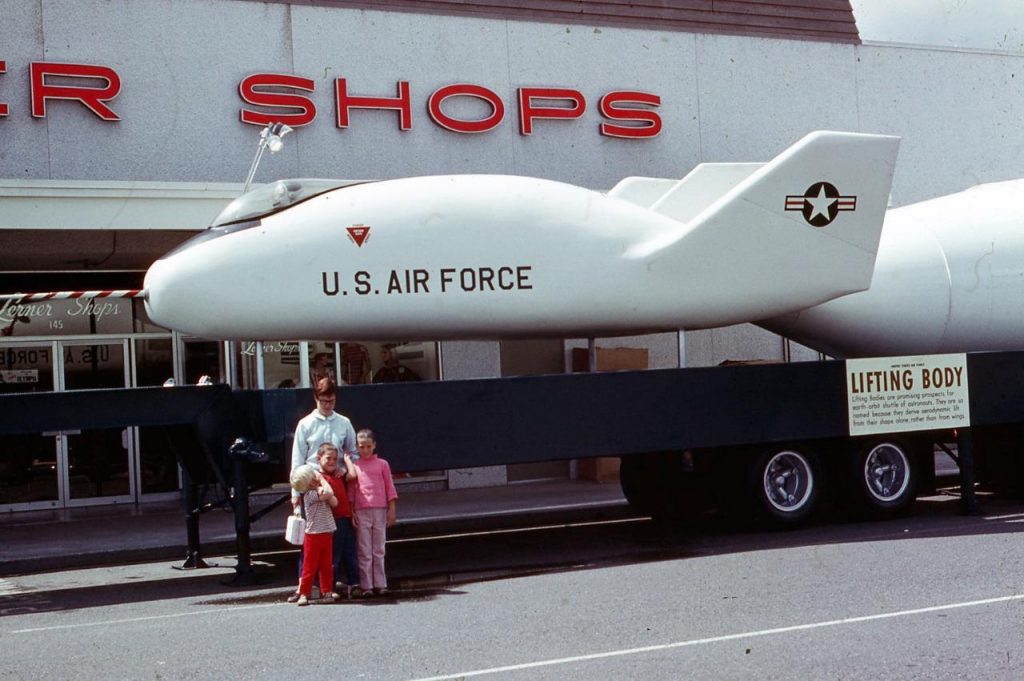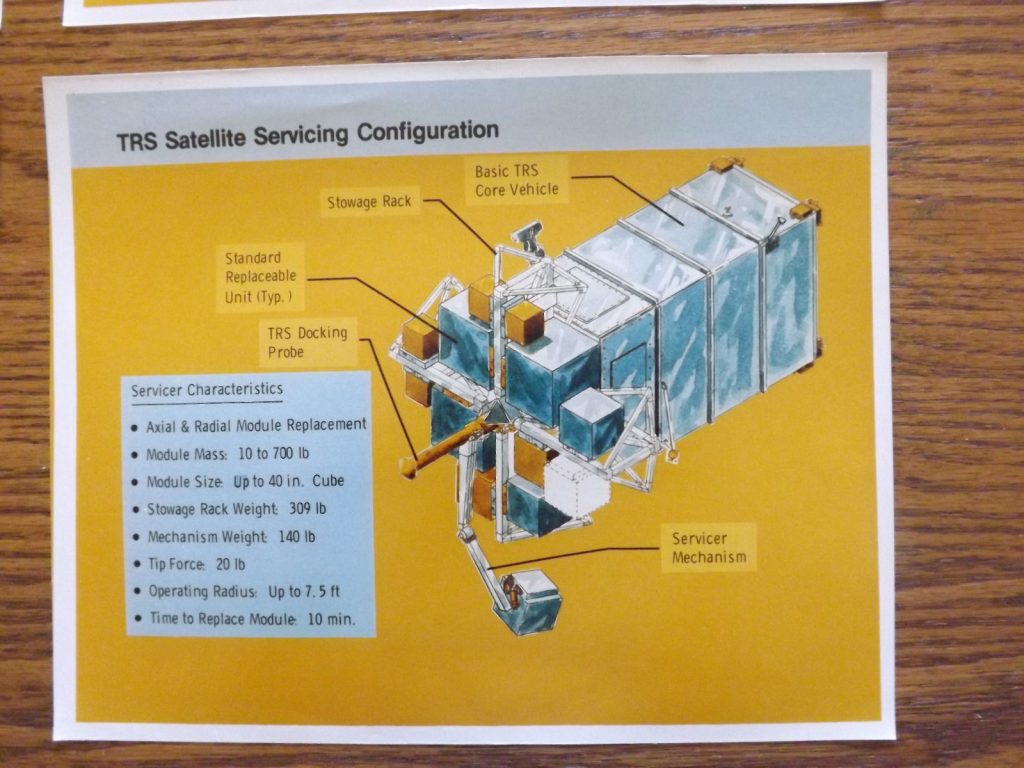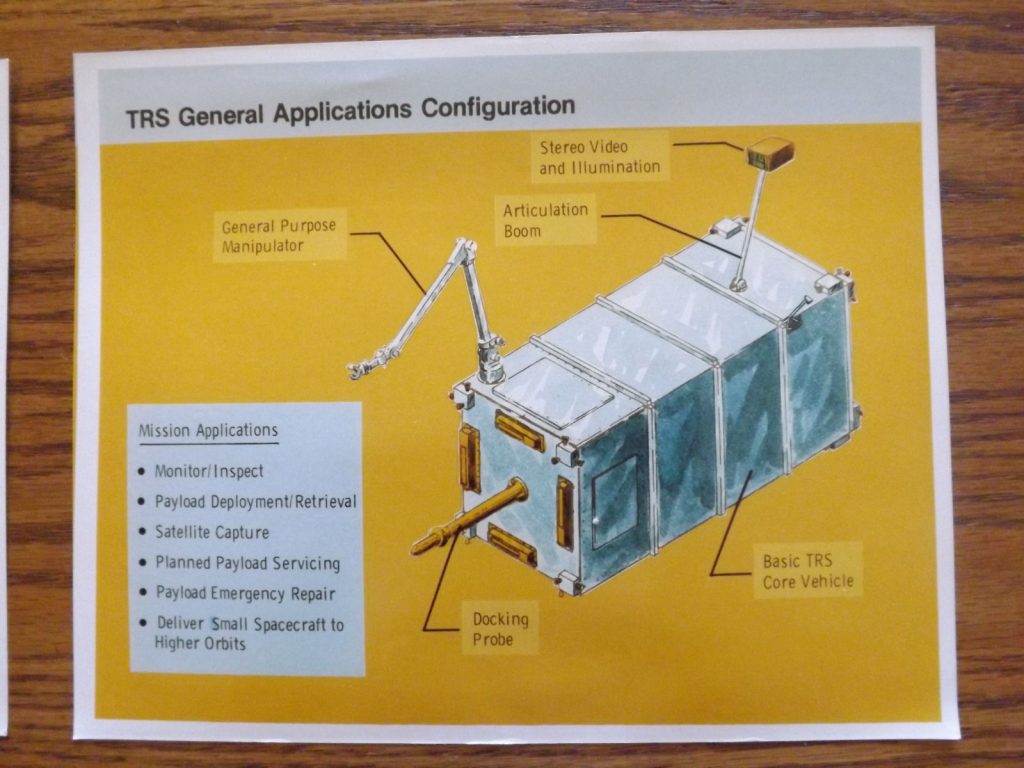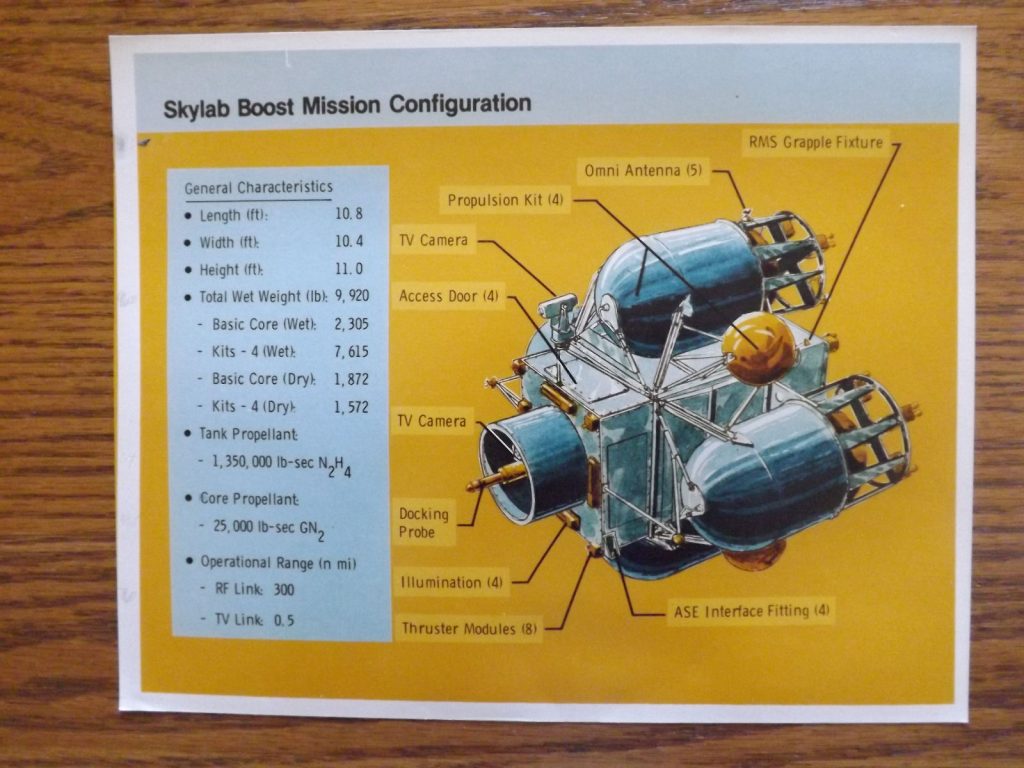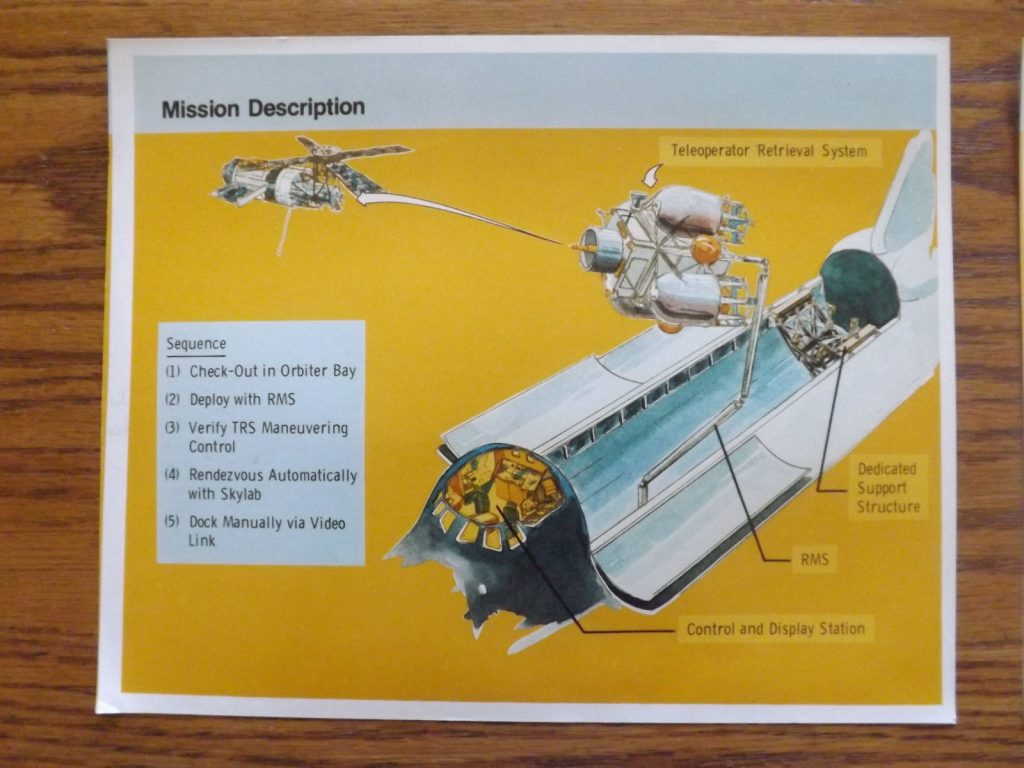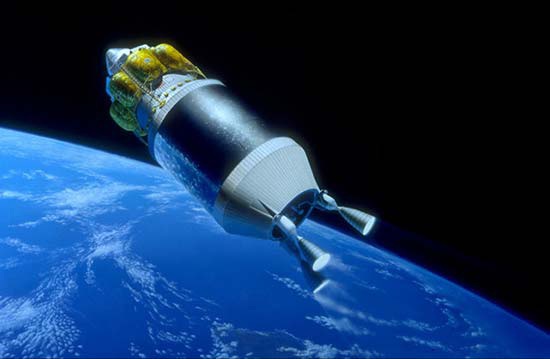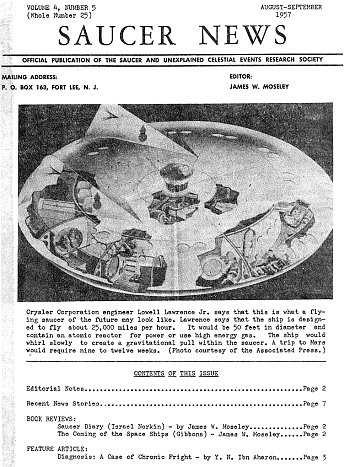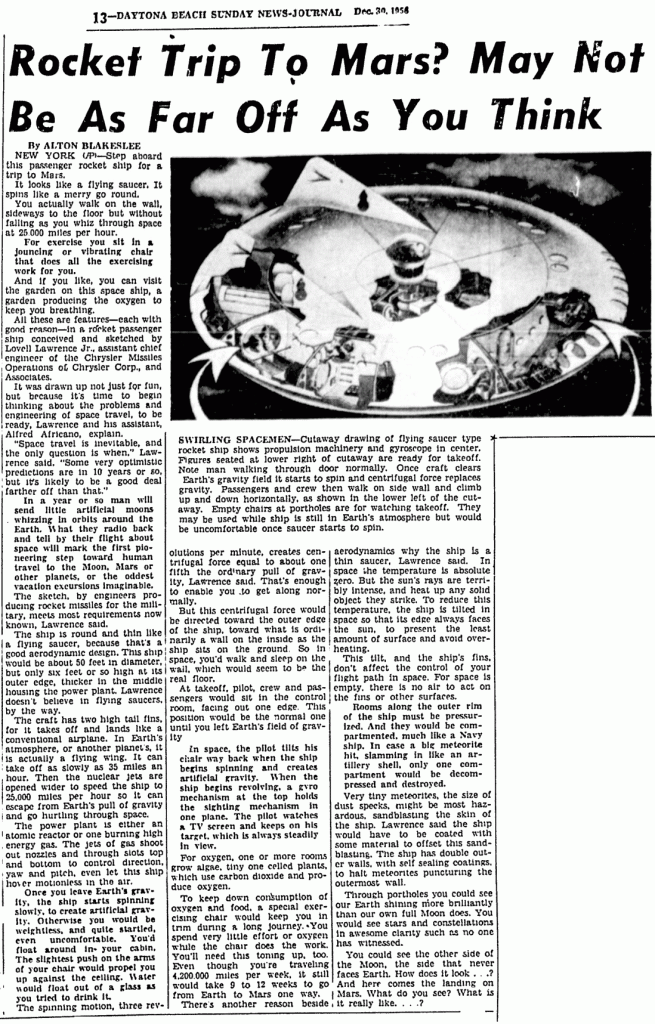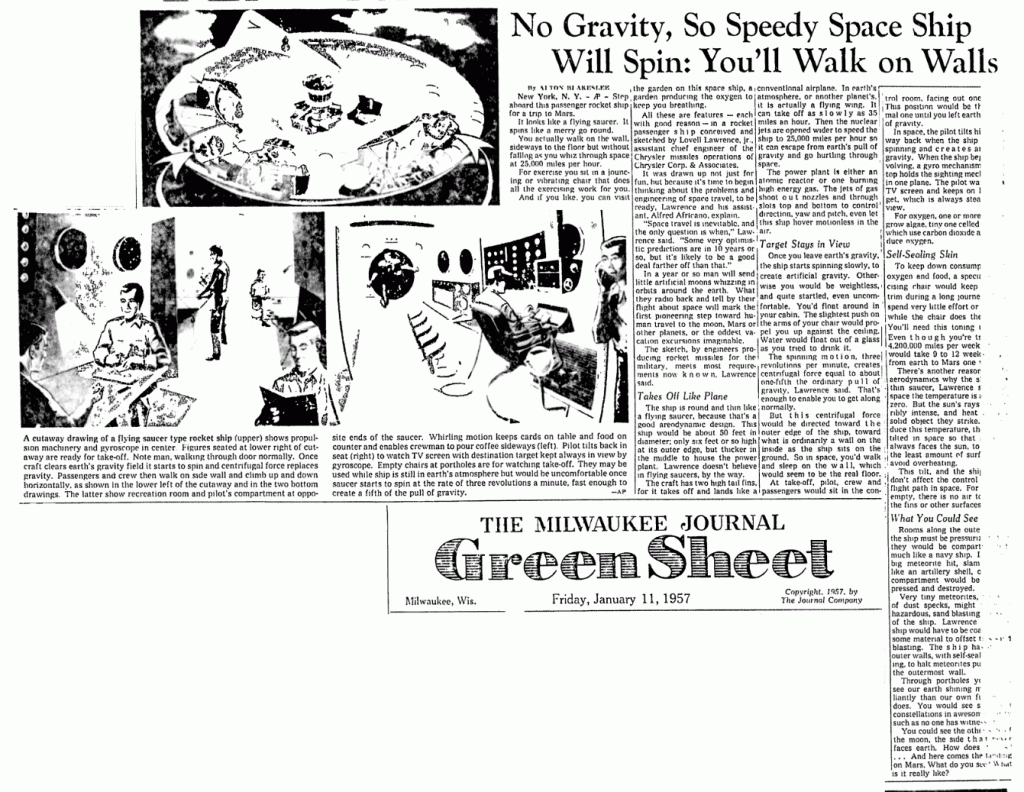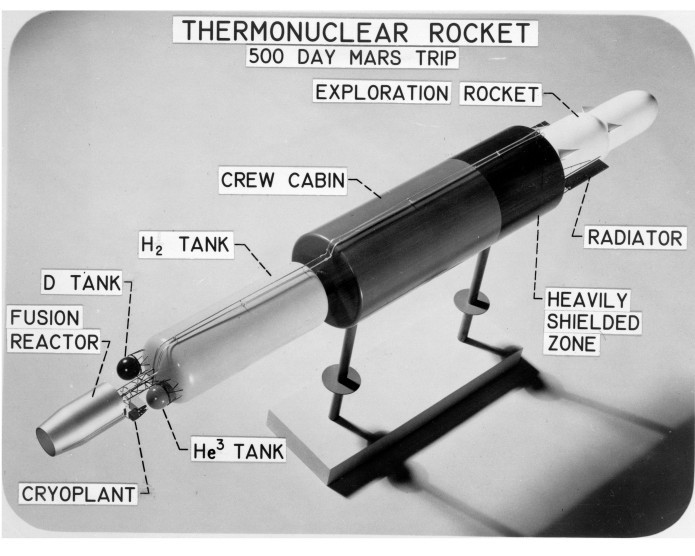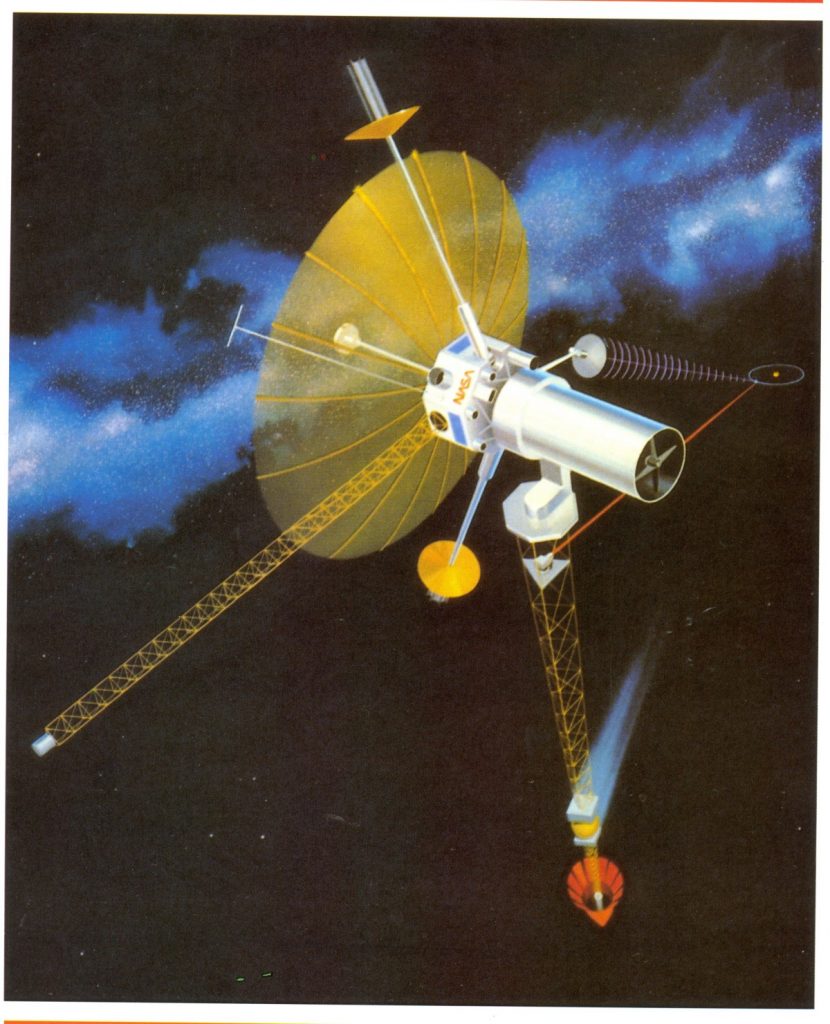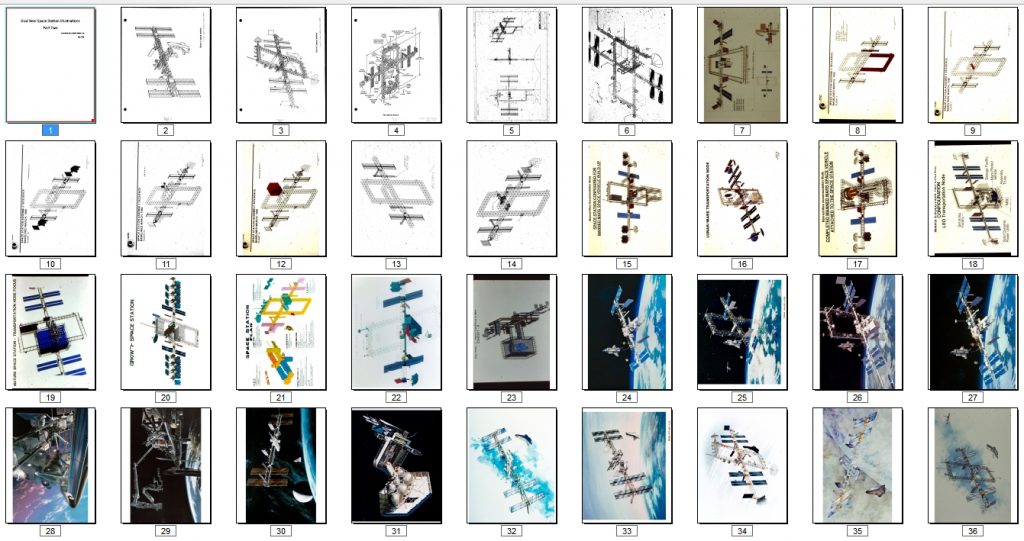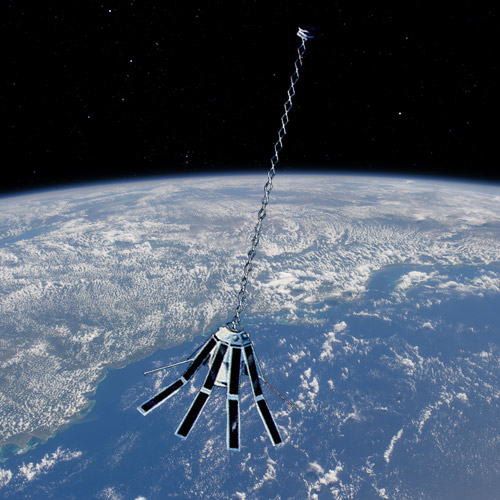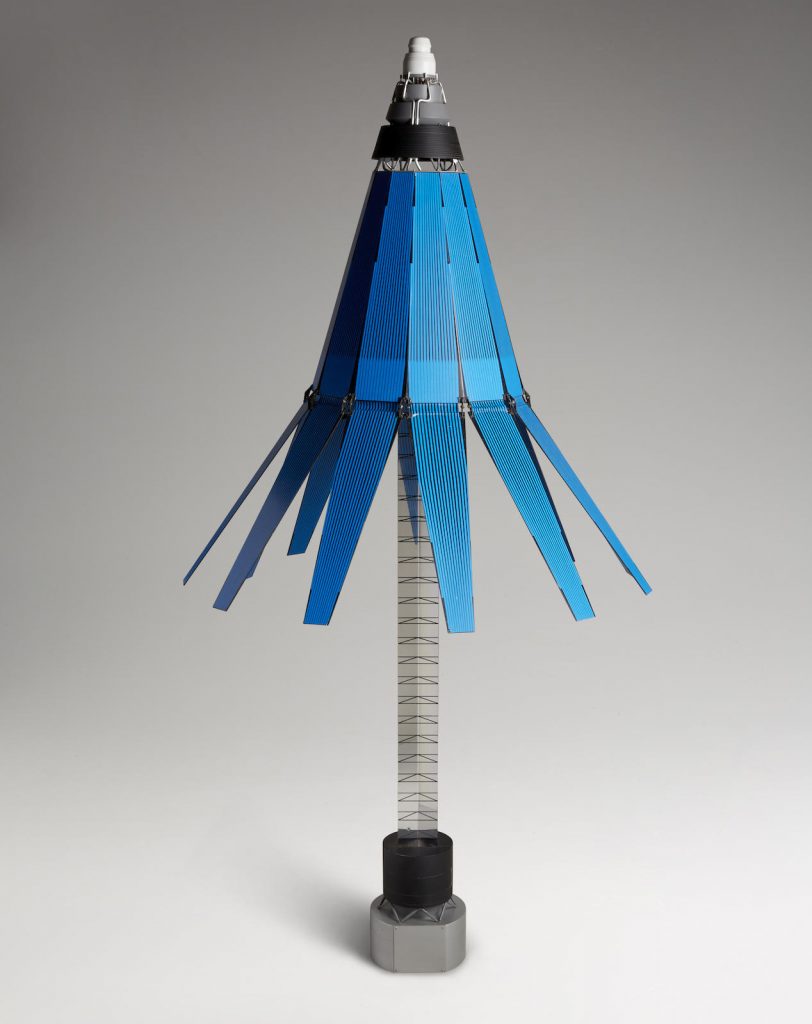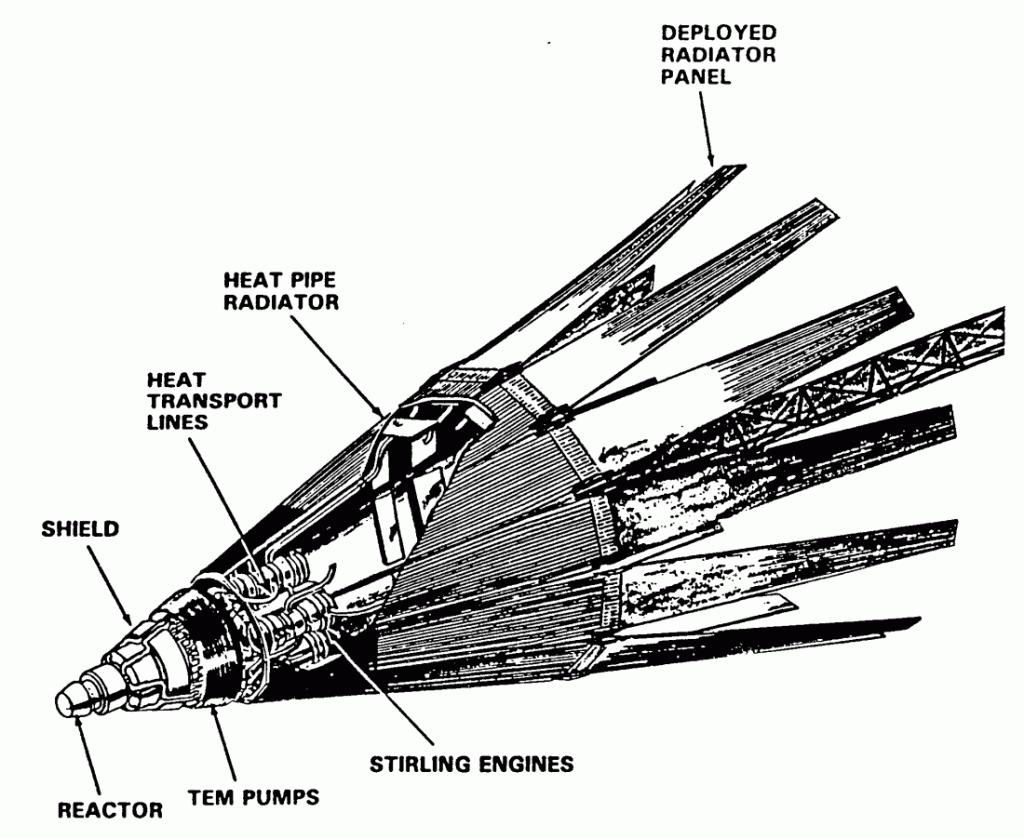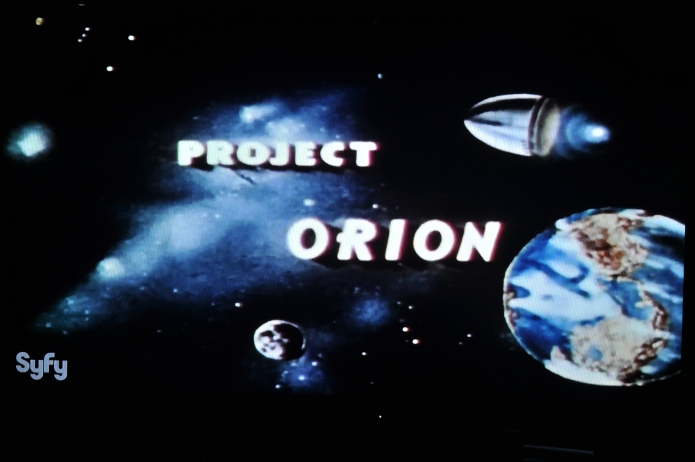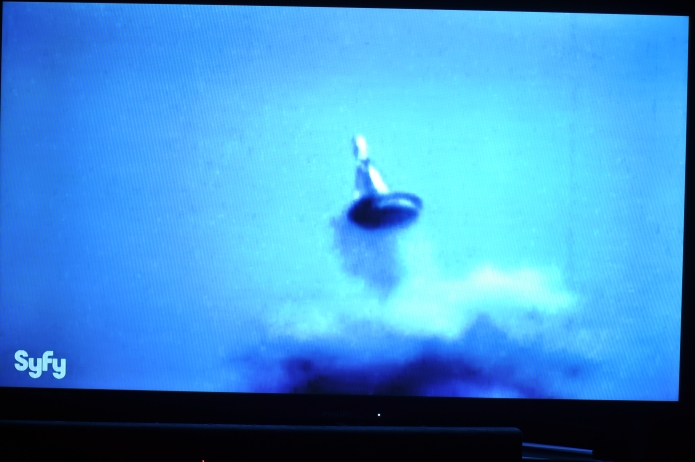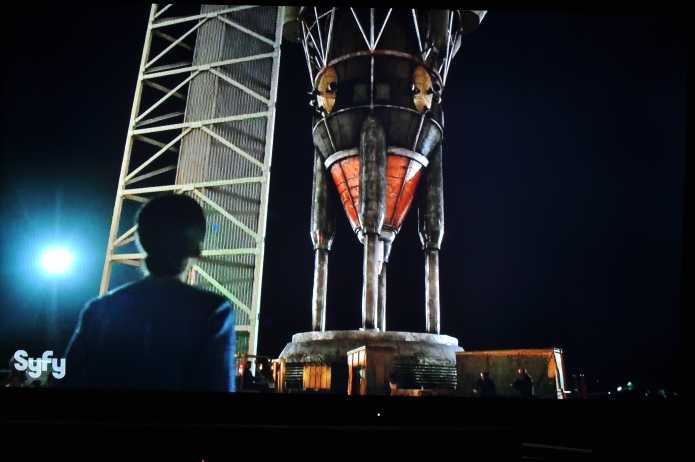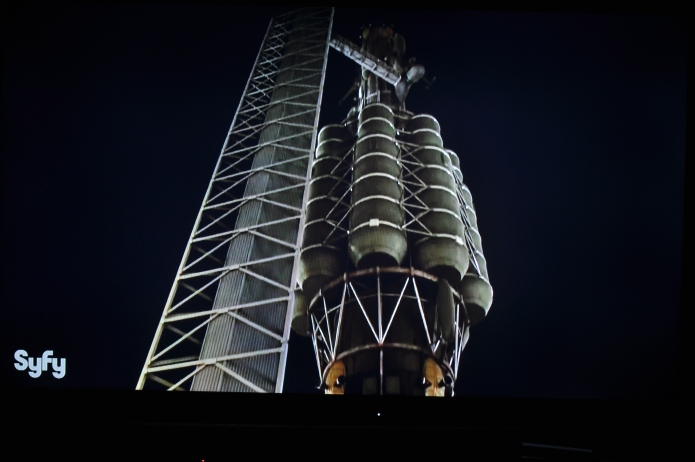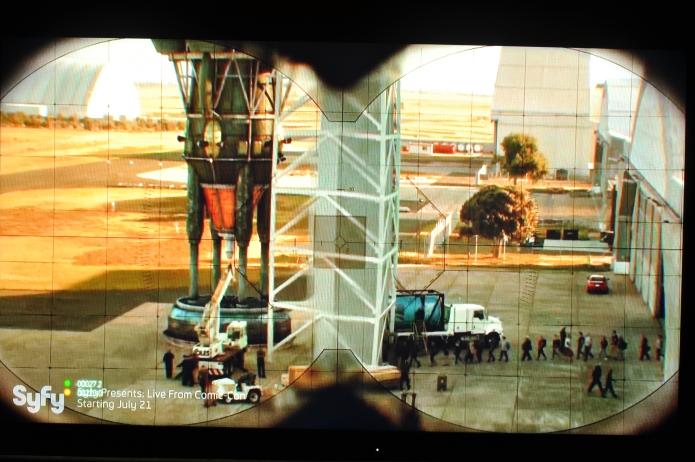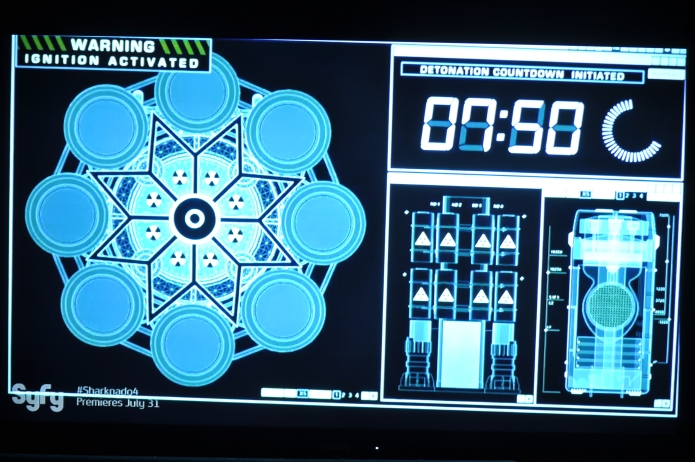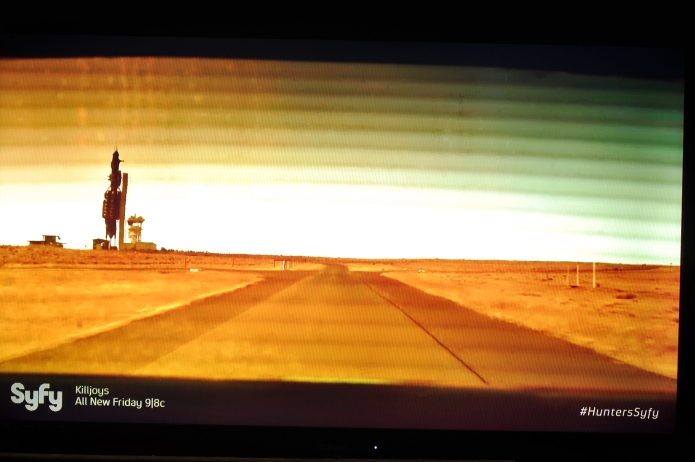Currently on ebay is a single slide, a photo someone took in the 1960’s. It shows a family standing in front of a full-scale mockup of the SV-5, what became the X-24A. This is hardly an unknown mockup; it has been shown elsewhere many times. But I thought this particular view might be of interest to some. It is shown on the back of a truck for transport, attached to a transition section that would, on the real vehicle, then attach to a launch vehicle such as a Titan II or III.
On ebay a little while back were some pieces of art illustrating some Martin Marietta concepts for teleoperated spacecraft. Included was an idea for a Skylab reboost spacecraft to be carried by the Shuttle. The reboost spacecraft would, it seems, be based on a simpler spacecraft to be used for general satellite repair, recovery and reboost.
A piece of NASA art illustrating a lunar-bound craft equipped with three relatively small nuclear thermal rockets. The payload is a lunar lander, similar in appearance to the “First Lunar Outpost” landers of the early 1990s, dating the art. To my eye this looks a bit dubious from the standpoint of nuking the crew… the reactors aren’t that far from them, what with the rather short hydrogen tank. *Perhaps* this was intended to be sent to lunar orbit unmanned, there to be met by a crew sent via chemical rockets. For lunar missions the utility of nuclear rockets would not be in getting payloads to the destination sooner; three days just isn’t that long, really. The advantage would be in sending *massive* payloads. So a small manned capsule sent chemically and a big heavily loaded lander sent via nukes might well make considerable sense.
There was a time when American auto manufacturers had important aerospace divisions. Chrysler, for example, was responsible for rockets such as the Redstone, Jupiter and the Saturn I and Ib first stage.
In late 1956, Lovell Lawrence Jr, an assistant chief engineer at the missiles division of Chrysler, publicized a concept for a nuclear-powered “flying saucer.” It seems to have been *partially* a reasonably rational concept for a long duration spacecraft for missions to Mars. It would spin like a frisbee to generate artificial gravity, though the relatively small radius would be likely to produce some harsh Coriolis effects. The saucer would be about 50 feet in diameter and only 6 feet thick.
Where the design goes a bit off the rails is that the performance expected of the craft was insanely impressive. It was a single-stage-to-solar-orbit craft, capable of taking off horizontally from a runway using nuclear-powered jet engines (note: “jet” in this case might mean “rocket.”) The craft would be capable of going from the Earth to Mars in 9 to 12 weeks.
Being that close to an atomic reactor (with a light enough shield to allow the thing to take off) would be a death sentence long before the craft would get to Mars.
After years of trying to research this concept, all I’ve managed to scrape up are three things from Ye Olde internet: two newspaper articles and one cover story from a UFO “fanzine.” I have tried over some years to obtain a copy of the “Saucer News” from August-September 1957 from sites like ebay, but without success. It seems like an original printing, or at least a decent scan, would provide a reasonably good version of the Chrysler saucer art.
An early/mid 1960’s concept model of an interplanetary spacecraft using a nuclear fusion powerplant. Back then there was a LOT of faith in the idea of fusion reactors being just around the corner. One very obvious design flaw? No radiators. Any internal-fusion system (or internal-fission, for that matter) would need *vast* radiator surface area.
Details on the photo are unavailable. I originally downloaded this image from the GRIN (Great Images in NASA) website, which has now been closed in favor of a Flickr account that is difficult to search. Feh. If you want the full-rez version *another* Flickr account has it HERE.
Starting in the 1970s and running through much of the 1980’s, the Jet Propulsion Laboratory ran numerous studies of Thousand Astronomical Unit (TAU) spacecraft. These were somewhat akin to Voyager class probes, but with important differences. instead of small RTGs for power, they would use SP-100 class fission reactors, mounted many dozens of meters away at the end of long booms. Located at the center of mass of the system would be a bank of ion engines; the nuclear electric propulsion system would operate for *years* to boost these craft to extremely high speeds. Still, it would take decades for them to travel 1,000 AU from the Sun, many times further than Pluto. There, large optical telescopes would take parallax measurements on distant stars; by positioning numerous TAU craft in every direction, the measurement baseline would be vast, and precise distance fixes could be made for stars on the other side of the galaxy.
A number of TAU designs were examined, but the one shown here in JPL art seems to be pretty representative. These probes would have to be engineered with a high degree of both reliability and autonomy as their main observation missions would only begin something like 50 years after launch. Diagrams of a different design and more information were presented in US Spacecraft Projects #3.
Probably nothing here really new to anyone, but it’s still a good reminder that every now and again people think big. A Flickr collection of color concept art from the 1970s illustrating NASA-Ames ideas for space colonies.
Space Colony Artwork From the 1970s
A while ago I was asked by another aerospace historian if I had any artwork of the “Dual Keel” version of the Space Station design from the mid/late 1980s. This was a predecessor to the International Space Station (the “Russians” being the “Soviets” at the time) and was to be used not just as an orbiting shack for some basic research, but also as an assembly area for manned missions to the moon and Mars. Turns out I had a fair amount of Dual Keel art. As is the way of things, a lot of that art is moderately poor… scanned from dusty slides, in many cases. Still, it’s what I had. It dawned on me that others might be interested in it, so I put all the images into the same size and format (standard 8.5X11) and made a PDF out of it, seventy some pages. I have uploaded Part Two to the “APR Extras” Dropbox site into the “2016-08 APR Extras” folder. This is accessible to all APR Patreon patrons at the $4 level and above (if you are such a patron and don’t have access, send me a message via Patreon, I’ll get you fixed up). Part One was uploaded to the “2016-07 APR Extras” Dropbox folder last month.
